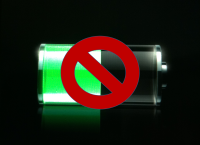As an Android and mobile web developer, I feel compelled asking people I know or meet a lot of questions about their phones. One trend I’ve been seeing is feedback that smartphones, themselves, aren’t really getting any smarter. The ironman/crossfit marathon to add new features at warp speed has left behind a trail of cool phones that have some fundamental issues. So, I’m going to take a look at some of these here.
To put things in perspective, at Google I/O 2013, Sundar Pichai announced that there have now been 900 million Android activations world-wide to date. That’s not including iPhone activations, of course. But, Yeow, that’s a lot of phones! So, let’s look at some things that haven’t improved much. It’s almost like Newton’s Third Law of Motion can be applied to smartphones: while some things improve, other things must take a back seat.
Security. I can say this with certainty – I have yet to see or hear about a smartphone advertisement that says something such as “we’re striving to make this phone the most secure phone yet.” One thing is clear that Apple’s app vetting process helps reduce the level of malware compared to Google Play. Sure I understand that nothing is 100% secure, but the operating system vendors and the handset vendors could at least talk about it. And, why don’t smartphones come with built-in, optimized versions of virus checkers and anti-malware tools like Windows PCs and laptops?
Most people’s lives could be seriously disrupted by the data stored on your typical smartphone, and we lose these and leave them behind accidentally by the thousands, and we inadvertently install malware.
Case in point – do a search on Google or bing using the term “smartphone security”, and see how many articles are published by the major phone vendors about security and securing your phone. The top result is by the FCC about their Smartphone Security Checker.
Restoring an Android phone. If you reset your droid or buy a new one, restoring everything back to the way it was and in it’s exact place, well…a very manual process. This is not very user friendly. Hey Android vendors, you should take a lesson from Apple on this one.
Display brightness and energy consumption. Phone displays appear to continue to be the “number one” draw on battery life. I’ve started to think most (many?) like their screens really bright. I mean realllly bright. It’s funny, I keep mine pretty dim to squeeze as much life out of the battery as possible, and I’ve lost count of the number of times people have said something like “how can even you see what you are doing??”
GPS energy consumption. My Garmin GPS lasts over 17 hours of continuous usage with two AA batteries. The battery on a typical smartphone has much greater storage capacity, but in actual field tests I’ve killed smartphone batteries in as little as 4 -5 hours of continuous GPS usage. GPS used wrong is a huge draw on the devices battery. Sure, a smartphone is doing a lot more work than a typical, single purpose GPS. But, my point is why hasn’t GPS battery consumption improved over five generations of smartphones? Those of us who build GPS-based native and web apps have to jump through hoops to optimize battery life in applications that do more than take a snapshot of the users current location. Some of the algorithms we write should simply be built-in to the firmware.
Charging times. Now I admit this varies from phone-to-phone but it’s still not very fast in general. I know I have said before that many people are never more than 10 feet from a charger, but for those of us who aren’t that attentive to charging I can say charging times can be an issue. For example, my iPad (okay it’s more of a tablet than a smartphone) is the slowest charging device on the planet compared to my original Google Ion which charged from dead to full in about an hour and a half. Sure, I understand there is a huge difference in battery size, but my point still stands. The cute, itty-bitty charger for iPad is way under-powered for the needs of charging a larger battery. And, maybe some people are okay with that?
Planned Obsolescence. This one is totally on Android. I’ve lost track of the number of Android phones that I have sitting around that have been rendered obsolete because the handset manufacturer provided one or maybe even two OS updates to the phone, and then they stopped. They become obsolete in the sense that some apps don’t run on older versions of the operating system. Sure, the upgrades are enticing (better camera, more memory, faster processors, etc. etc.) but what if someone doesn’t want or need to upgrade?
This may become more of an issue for people as some carriers are stopping their subsidies of phones and pushing users to carry the cost of a new phone directly. And new phones can give you sticker shock. If you have to pony up $350 – $600 for that new phone and all it’s advertised features, you might not be inclined to upgrade phones as often as you used to.
Wrap-up. So, I’ve written a mish-mash of different things that should be improved for both Android and iPhone. What I’d really like to see, and it probably won’t happen, is for Android, Apple and Microsoft to take a step back from the feature/functionality marathon and work on some fundamental issues to build an even stronger foundation for the next generation phones.
